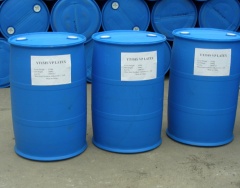Latex
| Infobox on Latex | |
|---|---|
| Example of Latex |  |
| Facts | |
| Origin | See text |
| Stowage factor (in m3/t) | 1,36/1,84 m3/t (drums) |
| Humidity / moisture | - |
| Ventilation | - |
| Risk factors | See text |
Latex
Description / Application
Latex is found in the sap of the Para rubber tree. The tree takes its name from the state of Pará, Brazil. Latex is used to make rubber. Brazil, in particular the city of Manaus grew rich on latex. Today, much natural latex comes from Southeast Asia, particularly Malaysia and Indonesia. Rubber can be produced synthetically (this means that it can be made in factories).
Latex is an aqueous suspension of rubber to which a few per cent ammonia is added as preservative. It is acknowledged as a very good preservative.
Shipment / Storage / Risk factors
Should not be subjected to extremes of temperature and if it goes solid then it is virtually irreversible. Do not stow in vicinity of "Cutch" which can contaminate and also should not be in contact with galvanized materials, brass, copper or yellow metals.
Latex is carried in bulk or in drums . In vessels with deep tanks the surface of the tank is first coated in candle wax or similar substance to allow the tanks to be sliced of residue on discharge.
Drums of latex are usually coated on the inside and can be loaded in a 20GP container.
Latex is also carried in bulk liquid form in special 20 Tanks with heating coils.
Flexi-bags provide another alternative stowed inside a 20GP container and are used for transits in temperate climates and where the ammonia preservation level permits. An aqueous suspension of rubber to which a few per cent ammonia is added as preservative. It is acknowledged as a very good preservative.
Rubber latex during transportation and storage should be protected from both extremes of temperature. Low temperatures (0°C or less) may cause damage due to freezing, but prolonged exposure to high temperatures may also be harmful. Drum shipment should not be left standing in the open air in tropical or sub-tropical climates. Apart from low temperature causing rubber latex shipped in drums to be damaged, latex shipped in bulk may suffer similar damage during discharge if adequate measures are not taken against the effect of low temperatures. If brought into port at the time of year when low temperatures prevail, difficulty, loss and extra expense in discharge may arise owing to coagulation.











